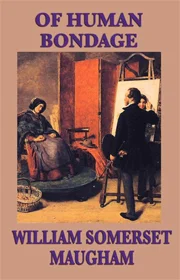
“Of Human Bondage” by W. Somerset Maugham is a poignant bildungsroman following the life of Philip Carey, an orphan with a clubfoot, as he navigates the challenges of love, self-discovery, and societal expectations in late 19th to early 20th century England and Europe. The novel explores the complexities of human relationships, the pursuit of art and beauty, and the evolution of Philip from a vulnerable young man to a resilient individual. With its realistic portrayal of emotions and timeless themes, “Of Human Bondage” stands as a classic that continues to captivate readers with its profound insights into the human experience.
Read Of Human Bondage Flipbook:
[Not yet available.]
Listen to Of Human Bondage Audiobook:
Title: Of Human Bondage
Author: W. Somerset Maugham
Genre: Bildungsroman (coming-of-age novel)
Published: 1915
Setting: Late 19th to early 20th century England and Europe
Plot Summary: Follows the life of Philip Carey, an orphan with a clubfoot, as he navigates through love, art, and the challenges of self-discovery.
Themes:
Character Development: Philip evolves from a naive and insecure young man to a more self-aware and independent individual.